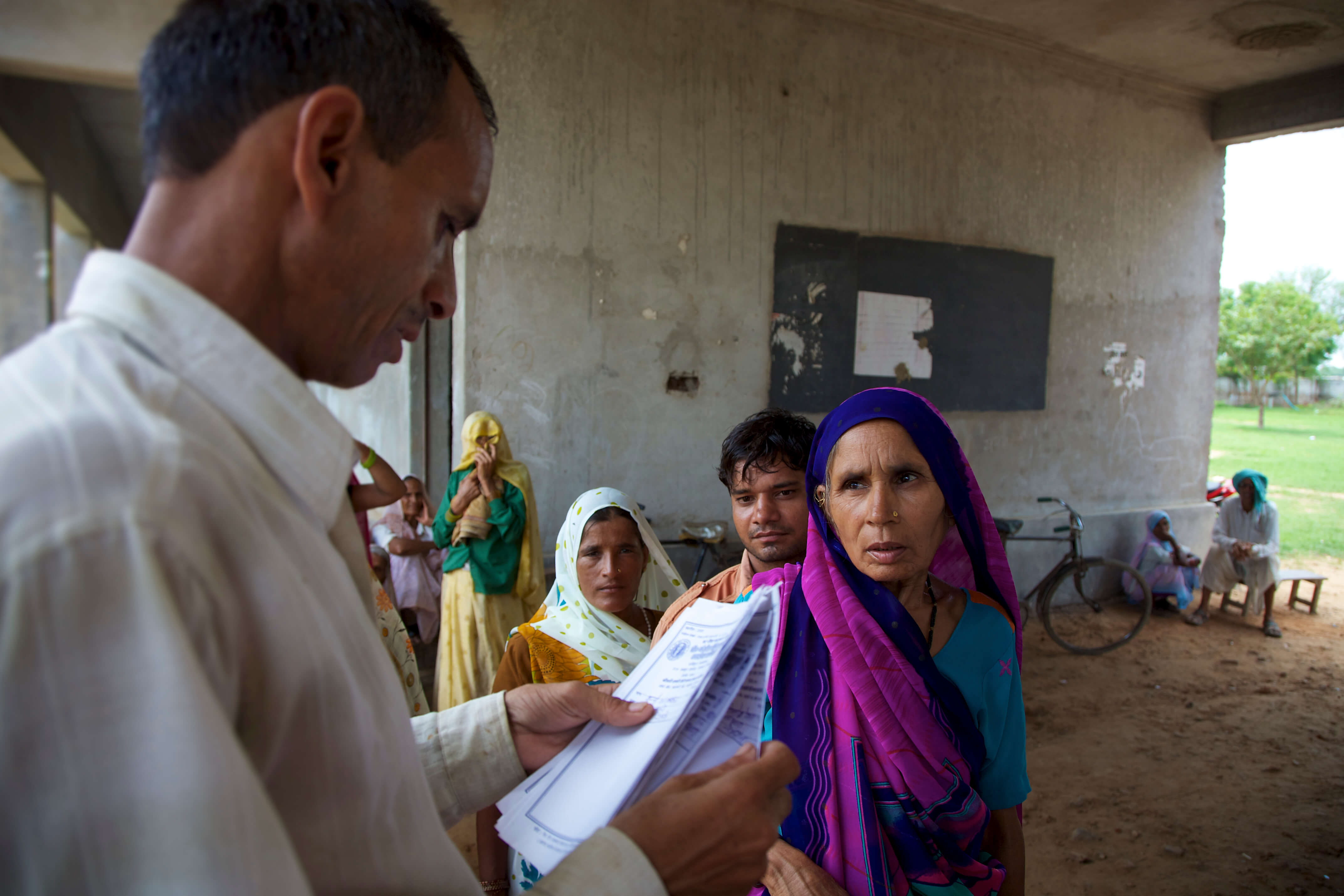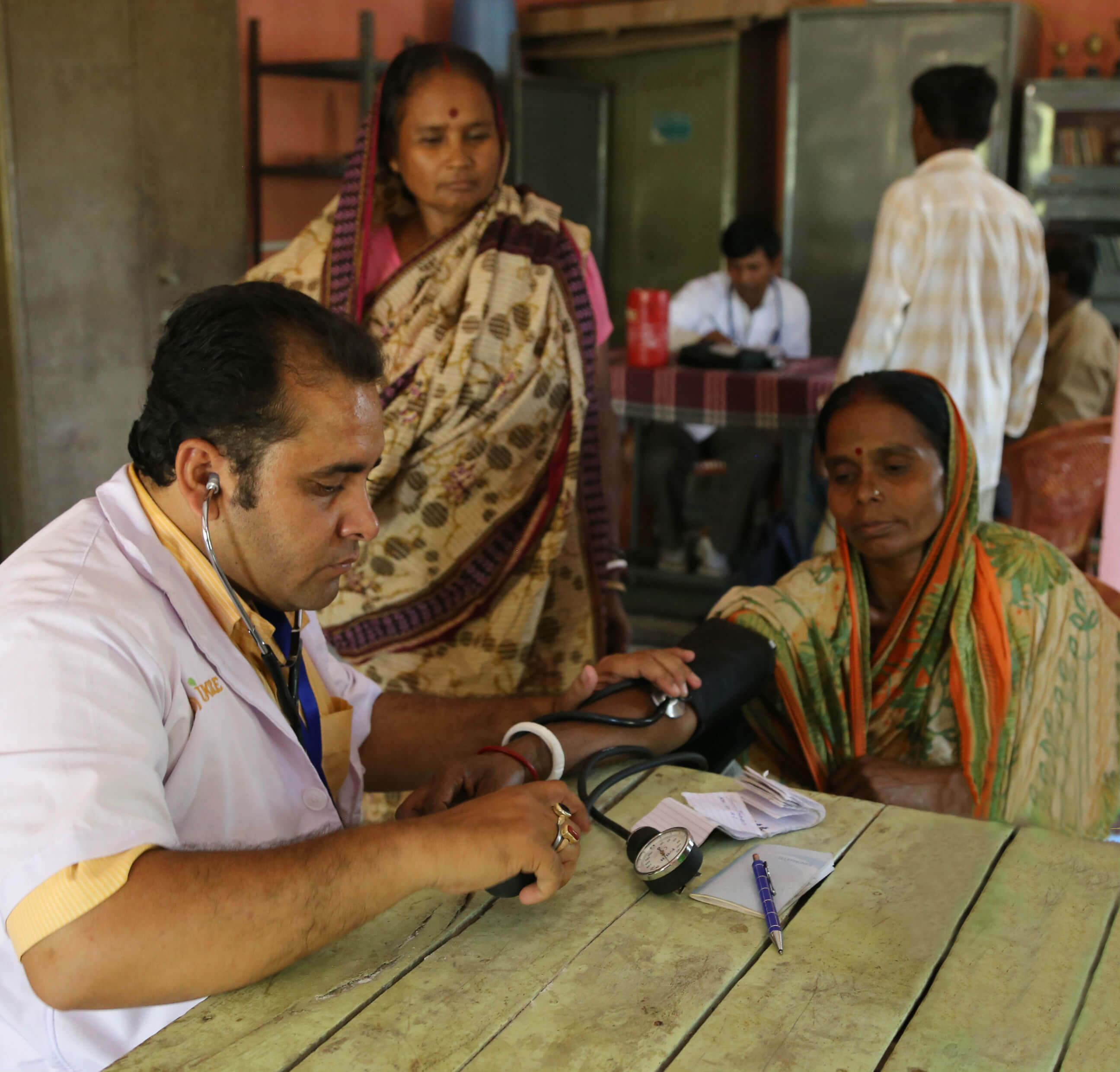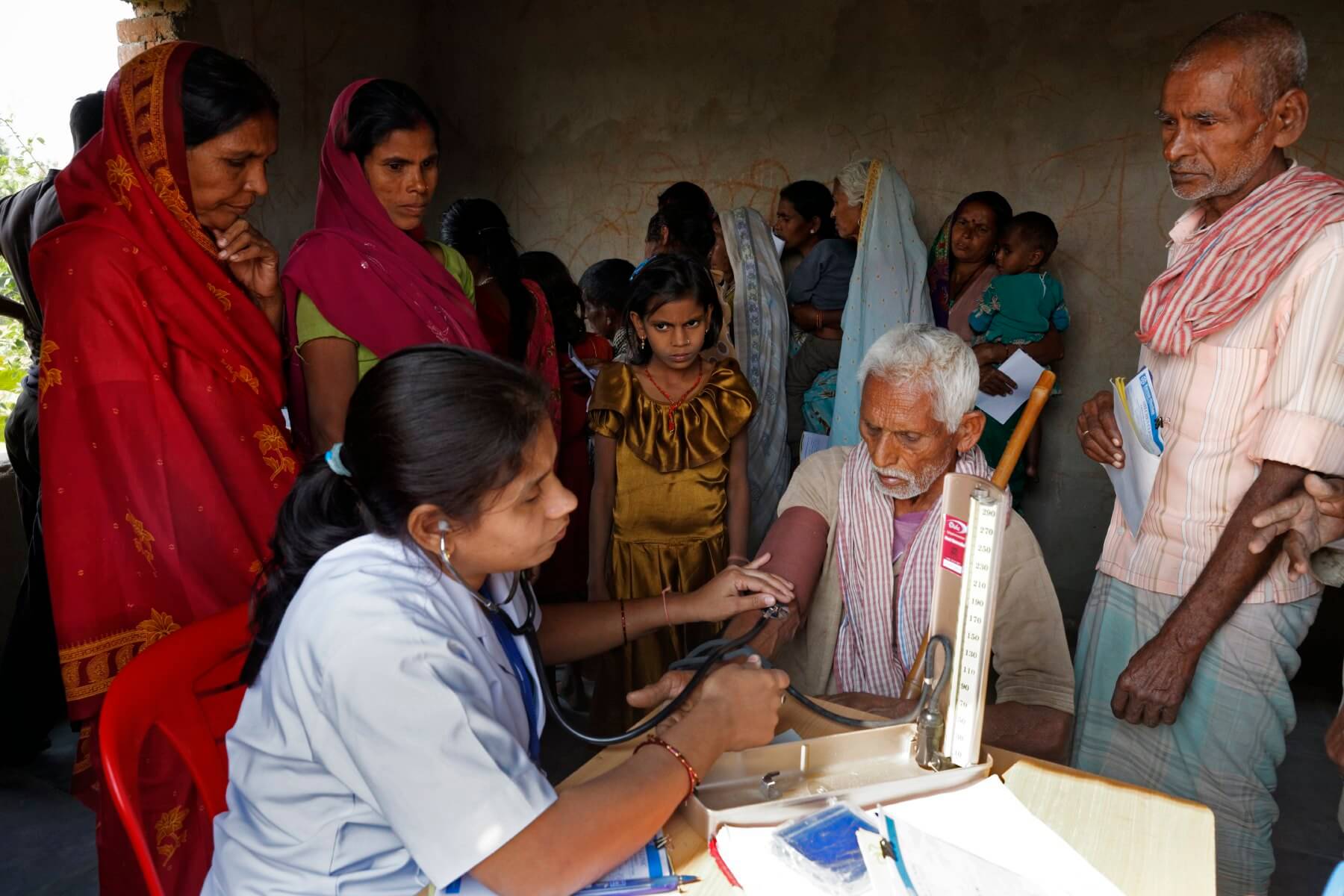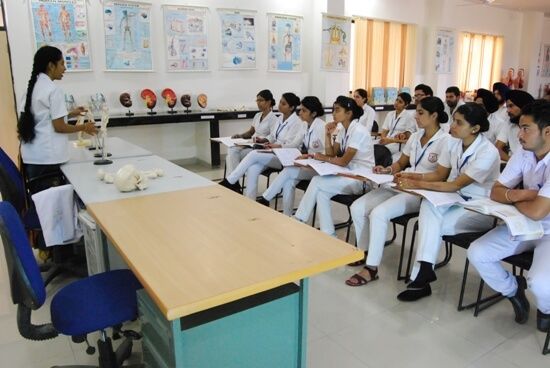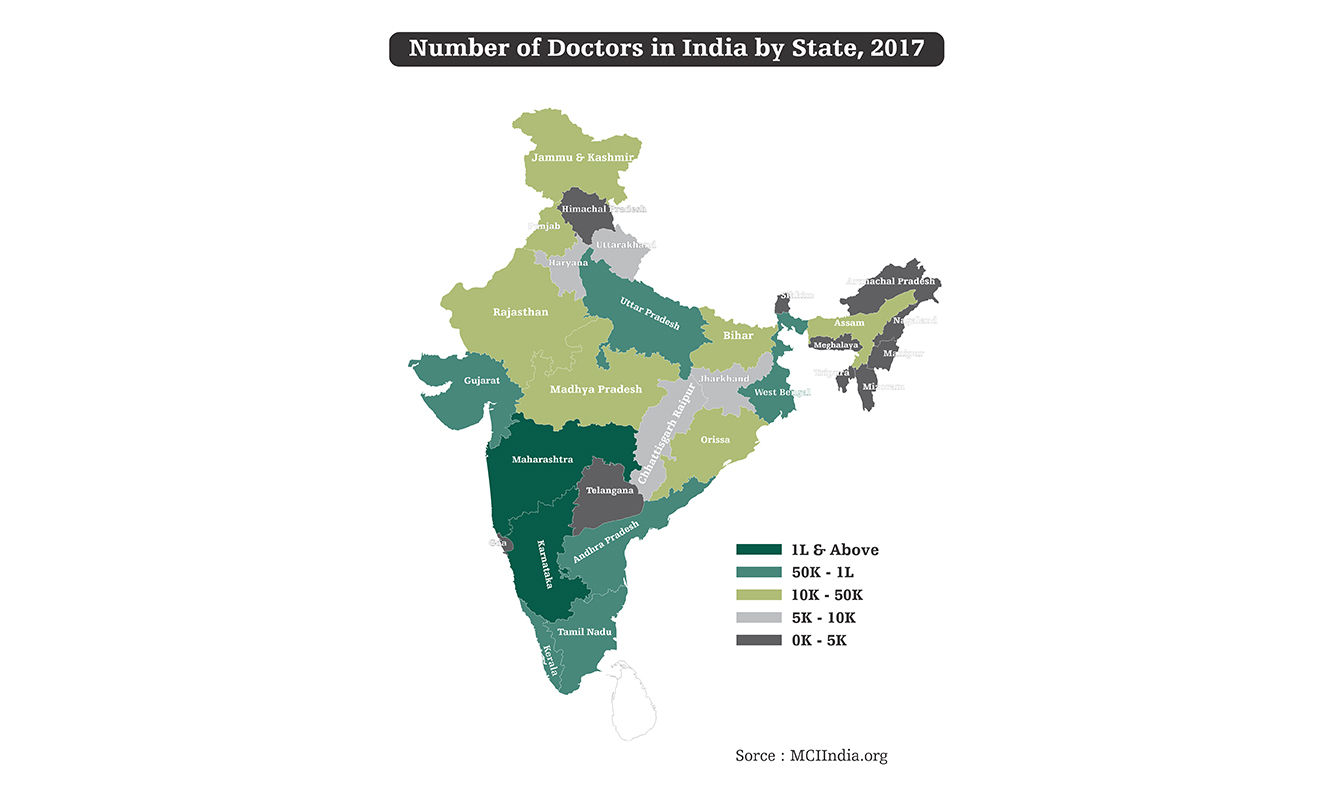
Doctor-patient ratio: The current state of doctor to patient ratio, keeping the ever-growing population at hand is alarming. A research study published in BMJ found that there is one government doctor for over 11,000 patients in India (Chakrabarty, 2016) as compared to WHO’s norm of 1 doctor per 1000 population.

